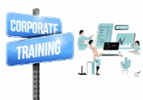MCSE

| Start Date | Class Timing | Duration | Mode of Training | Trainer Profile |
|---|---|---|---|---|
| 26-Apr | 9am to 2pm, every Sunday | 8 Weeks | Onsite |
- Why Choose getitcore
- Online Training Features
- Who can do this course
- What does it covers
- After course completion
- Job Opportunities
- Certification Exam
- Course Content
- Real-Time Expert Trainers (more than 10 years experience in particular
- technology)
- Flexible timings
- Do not worry about your timings because we are always with your timings.
- Industry Specific Scenarios
- Students are provided with all the Real-Time and Relevant Scenarios. With Real time workshops
- live online Training courses
- Industry Specific Scenarios
- Video Recording Sessions
- Soft Copy of Materials
- Resume Preparation for interviews
- Interview Preparation Tips
- 100 %Free job assistance
Why Choose getitcore
getitcore ONLINE TRAINING FEATURES
- Real-Time Expert Trainers
- Live online Training courses
- Real-Time Expert Trainers
- Industry Specific Scenarios
- Video Recording Sessions
- Soft Copy of Materials
- Resume Preparion for interviews
- Interview Preparation Tips interviews
- 100 %Free job assistance
Online Training Features
We believe to provide our students the Best interactive experience as part of their learning
Flexible timings
Do not worry about your timings because we are always with your timings.
Industry Specific Scenarios
Students are provided with all the Real-Time and Relevant Scenarios. With Real time workshops
Who can do this course
This course is also suitable for graduation of (UG and PG) university and as well as who is having passion in system knowledge, Business and would like to enter this course.
Keywords: AWS training, CCNA training, DEVOPS training, Linux training, Kali Linux training, Ethical Hacking training, Phython training, Soft Skills training, getitcore AWS training, getitcore CCNA training, getitcore DEVOPS training, getitcore Ethical Hacking training, getitcore Linux training, getitcore Kali Linux training, getitcore Phython training, getitcore Soft Skills training
What does it covers
After course completion
- Explain and use the basic functions of technology
- Make the necessary settings for consumption-based planning
- Utilize procurement optimization techniques
- Release procedures
- Process invoices and manage discrepancies
- Enter goods movements in the system and make the relevant settings for special function.
Job Opportunities
- (After passing the certification exam)
- Business Process Owner
- Team Lead
- Power User and End User
Certification Exam
- This course will lead you towards the following certification
- Associate Level
- 80 questions for the exam
- 3 Hours duration
- Passing Score is 80%
Course Content
- Installation of Windows Operating System
- IP Addressing & Active Directory
- Member Server / Client and User Management
- Permissions
- Profile & File Server Resource Manager (FSRM)
- Organizational Unit & Distributed File System (DFS)
- Logical Structure of Active Directory
- Roles of Active Directory
- Group Policies
- Trust Relationship
- Global Catalog, Sites and RODC
- Domain Naming System (DNS)
- Dynamic Host Configuration Protocol (DHCP)
- Windows Deployment Services (WDS)
- Internet Information Services (IIS) – Web & FTP
- Routing
- Remote Access Services, Remote Desktop Services and HTTPS Websites
- iSCSI and Storage
- Hyper-V
- Windows Server Backup
MSCE Course Content - Certification Based
Installation of Windows Server 2012
Introduction and Creation of Users accounts
Conversion of GUI to Server Core
Conversion of Server Core to GUI
Installing Active Directory – Domain Controller
Configuring Client OR Configuring Member Server
Creating Domain User Accounts
Changing Default Password Policy
Enabling Account Lockout Policy
Configuring Log On To and Logon hours permissions
Changing Allow Logon Locally Policy
Security Level Permissions
Share Level Permissions
Adding Mapped Drives
Configuring Local Profiles
Configuring Roaming Profiles
Configuring Home Folder
Installing FSRM Roles Service
Configuring Quota Limits using FSRM
Creating an Organizational Unit (OU)
Delegating Control to a User
Groups
Install DFS Namespace
Creating DFS Namespace
Creating DFS Folders
Configuring Additional Domain Controller
Configuring Child Domain
Configuring New Domain Tree in Existing Forest
Transfer of Roles
Seizing of Roles
Applying Group Policy on OU Level
Applying Group Policy on Domain Level
Applying Group Policy on Site Level
Applying Group Policy Modeling
Applying Software Deployment Policy
Applying Scripts using Group Policy
Applying Folder Redirection
Creating Forest Trust
Active Directory Recycle Bin
Configuring Global Catalog Server
Creating Active Directory Sites
Creating Active Directory Site-Links
Creating a Pre-Create RODC Account
Configuring Read-only Domain Controller
Installing DNS Service
Creating Standard Primary Forward Lookup Zones
Creating Standard Primary Reverse Lookup Zones
Creating Secondary Zone
Creating Stub Zone
Creating Active Directory Integrated Primary Zone
Conditional Forwarders
Forwarders
Root Hints
Cache Server
Installing DHCP Service
Creating a Scope
Creating DHCP Reservations
DHCP Server Backup and Restore
Configuring DHCP Server Failover
Installing Windows Deployment Services
Configuring Windows Deployment Services
Adding Windows 2012 Boot Image to WDS Server
Adding Windows 2012 Install Image to WDS Server
Installing Internet Information Service - Web & FTP
Creating Website
Configuring Redirection of Websites
Creating Virtual Directory
Changing the Website IP address or Port no
Creating Do not Isolate Users FTP Site
Assigning the IP Address to Configure Routing
Installing Routing Service on Router 1 & Router 2
Enabling Routing on Router 1 & Router 2
Configuring Static Routes
Configuring Network Address Translation
Configuring DHCP Relay Agent
Configuring VPN Server
Establishing VPN Connection
Configure Remote Desktop Server in Remote Admin Mode
Creating Self-Signed Certificate for HTTPS Website
Creating a HTTPS Web Site
Configuring iSCSI Target Server
Configuring iSCSI Initiator
Creating Storage Pool and Simple Volume (RAID-0)
Creating Mirror Volume (RAID-1)
Creating Parity Volume (RAID-5)
Installing Hyper-V
Configuring Virtual Machine on Hyper-V
Creating Fixed size Virtual Hard Disk
Creating Dynamically expanding Virtual Hard Disk
Creating Differencing Virtual Hard Disk
Configuring Virtual Networks
Configuring Windows Server Backup & Recovery
Extract or delete some HTML tag attributes from the desired tags, based on your criteria with the online HTML editor. Other useful features will help you to make web content composing a piece of cake.









